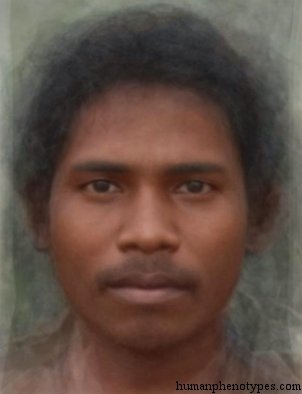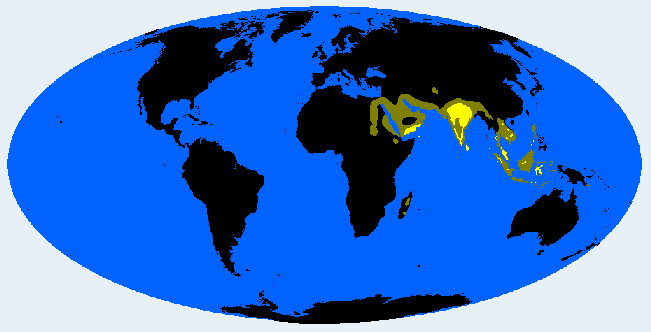Description:
Ancient South Asian type that probably split off early and long dominated large parts of South Asia from Arabia to the Sunda Islands. Was pushed back by later migrations and became restricted to hunter-gatherers and forest populations. The skin is medium to dark brown, the hair wavy to curly. Skulls are often long and small, stature rather short, the face low, brow ridges significant, forehead and chin receding, mild prognathy common. The most typical variety is the Vedda type that survives in small numbers in Sri Lankan forests. More common are the Gondids in tribal populations of India (North Gondid, South Gondid). Malids of South India show some Negritoid traits. Toalids of Indonesia are shorter-skulled. Other varieties include Senoids of Indochina and Arabian Veddoids.Names:
Weddid (Eickstedt, 1952; Lundman, 1967, Vogel, 1974, Knussmann, 1996), Veddid (Lundman, 1988), Veddoid (Cole, 1965; Debets, 1974), Vedda (Vallois, 1968), Veddidi (Biasutti, 1967), Ceylonesian-Sundanesian (Cheboksarov, 1951, ) Australoid (Hooton, 1946), Homo veddalis (Haeckel, 1898).





